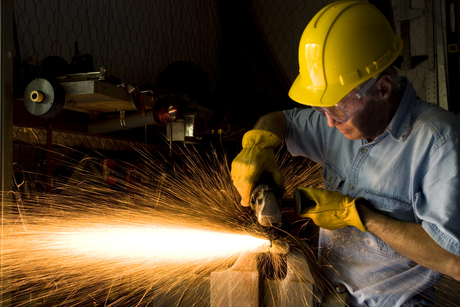Men more likely to damage their eyes

Men are almost five times more likely than women to require the removal of a foreign body embedded in their eye.
The latest Medicare statistics reveal that 8222 optometry patients have required the removal of a foreign object embedded in the eye since September 2015. Typical items that can embed in the eye include bits of metal, sand, dirt and grit and vegetative matter.
“Of those who presented for treatment, 6832, or 83%, were men,” said Optometry Australia’s senior resident optometrist, Luke Arundel.
Australians aged 45–54 are more prone to needing treatment for the removal of foreign bodies than any other age group. Again, men in this group received the most treatments with 1400 cases treated compared to around 250 women.
Arundel said that more men than women may require this type of treatment due to gender differences across certain occupations such as trades and labouring, as well as home duties such as maintenance, renovating and gardening. However, he said it is a sign that Australians need to be taking eye safety more seriously.
Optometry Australia highly recommends that Australian standard safety glasses be worn by people working in an environment, or with equipment, that generates debris such as wood cutting, carpentry, grinding, hammering, mowing or pruning. Clear safety glasses are available, as well as sunglasses and prescription options for those who need to wear spectacles.
Having a foreign body in the eye can cause the eyes to water, along with symptoms of redness, pain and a constant gritty or scratchy sensation.
“Depending on where the object has lodged, you might notice that your vision has become blurry or sensitive to light. This is because the object can cause damage to the cornea, or clear window at the front of the eye, which plays an important role in focusing your vision,” said Arundel.
“It is essential that if you have something stuck in your eye that you head straight to your nearest optometrist to have it removed. Don’t attempt to do this yourself as you may damage the eye further and examination of the eye under a microscope is critical to assessing if prescription medication is also required.”
Remember to always promptly seek professional medical advice for any eye injuries.
NSW Govt enforces engineered stone ban via inspections
Over 100 improvement notices have been issued to workplaces as part of the NSW Government's...
Stronger silica dust protections for workers take effect
New laws that came into effect on 1 September will provide additional protections for workers...
Safety app launched for farmers affected by gas projects
A workplace health and safety and environment expert has launched a new framework designed to...







